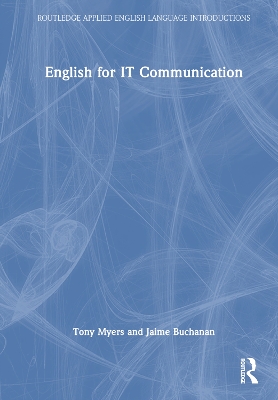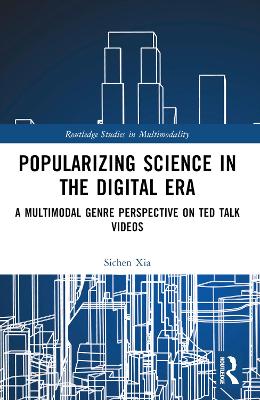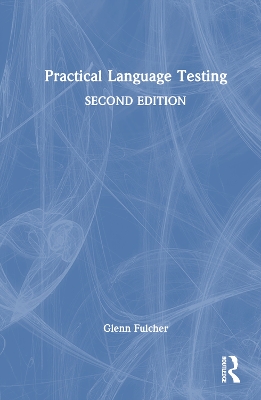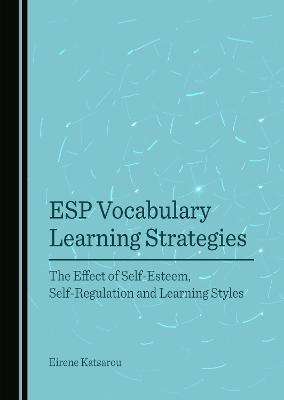English for IT Communication
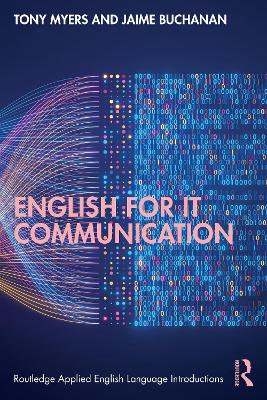 portes grátis
portes grátis
English for IT Communication
Buchanan, Jaime; Myers, Tony
Taylor & Francis Ltd
11/2024
206
Mole
9781032647494
Pré-lançamento - envio 15 a 20 dias após a sua edição
Descrição não disponível.
Chapter 1 - Audienceand Purpose in IT
1.1 Introduction to audience and purpose
1.2 Analyzing audience: who's going to read this?
1.3 Common types of IT audience
1.4 Analyzing purpose: why are they reading it?
1.5 Language for audience and purpose
1.6 Review
Chapter 2 - Design principles in IT
2.1 Introduction to design principles
2.2 Design principles
2.3 Design in IT contexts: headings
2.4 Design in IT contexts: lists
2.5 Data visualization strategies
2.6 Review
Chapter 3 - Workplace communication in IT
3.1 Introduction to workplace communication
3.2 Email
3.3 Memos
3.4 Enterprise social media
3.5 Language focus in workplace communications
3.6 Review
Chapter 4 - Process documents in SDLC
4.1 Introduction to project management documentation
4.2 Work breakdown structures
4.3 Roadmaps
4.4 Other process documents
4.5 SDLC documentation best practice
4.6 Review
Chapter 5 - System documents in SDLC
5.1 Introduction to product documentation
5.2 Product requirement document
5.3 Software requirements specification document
5.4 UX design documentation
5.5 API documentation
5.6 Quality assurance documentation
5.7 Language focus in system documentation
5.8 Review
Chapter 6 - User documents in SDLC
6.1 Introduction to user documentation
6.2 End-user documentation
6.3 Online tools
6.4 Language focus for user documents
6.5 System admin documentation
6.6 Review
Chapter 7 - Report writing in IT
7.1 Introduction to report writing in IT
7.2 Proposals
7.3 Recommendation reports
7.4 Feasibility reports
7.5 Progress reports
7.6 Evaluation reports
7.7 Common report features
7.8 Language focus in report writing
7.9 Review
Chapter 8 - IEEE referencing and formatting
8.1 Introduction to IEEE
8.2 The basics of referencing
8.3 In-text citations
8.4 End-reference list
8.5 Abbreviations and locators
8.6 IEEE style guide
8.7 Drafting tips for organizing source material
8.8. Review
Chapter 9 - Multimodal communication in IT
9.1 Introduction to multimodal communication
9.2 Video conferencing
9.3 Presentations
9.4 Language focus in presentations
9.5 Review
Chapter 10 - Case Studies: Applied communication in IT
Note to the teacher/independent learner
Case study 1: conduct a stakeholder profile
Case study 2: redesigning a company website
Case study 3: reviewing automated messages
Case study 4a: developing a micro-payments app
Case Study 4b: developing a micro-payments app
Case study 5: writing for end users
1.1 Introduction to audience and purpose
1.2 Analyzing audience: who's going to read this?
1.3 Common types of IT audience
1.4 Analyzing purpose: why are they reading it?
1.5 Language for audience and purpose
1.6 Review
Chapter 2 - Design principles in IT
2.1 Introduction to design principles
2.2 Design principles
2.3 Design in IT contexts: headings
2.4 Design in IT contexts: lists
2.5 Data visualization strategies
2.6 Review
Chapter 3 - Workplace communication in IT
3.1 Introduction to workplace communication
3.2 Email
3.3 Memos
3.4 Enterprise social media
3.5 Language focus in workplace communications
3.6 Review
Chapter 4 - Process documents in SDLC
4.1 Introduction to project management documentation
4.2 Work breakdown structures
4.3 Roadmaps
4.4 Other process documents
4.5 SDLC documentation best practice
4.6 Review
Chapter 5 - System documents in SDLC
5.1 Introduction to product documentation
5.2 Product requirement document
5.3 Software requirements specification document
5.4 UX design documentation
5.5 API documentation
5.6 Quality assurance documentation
5.7 Language focus in system documentation
5.8 Review
Chapter 6 - User documents in SDLC
6.1 Introduction to user documentation
6.2 End-user documentation
6.3 Online tools
6.4 Language focus for user documents
6.5 System admin documentation
6.6 Review
Chapter 7 - Report writing in IT
7.1 Introduction to report writing in IT
7.2 Proposals
7.3 Recommendation reports
7.4 Feasibility reports
7.5 Progress reports
7.6 Evaluation reports
7.7 Common report features
7.8 Language focus in report writing
7.9 Review
Chapter 8 - IEEE referencing and formatting
8.1 Introduction to IEEE
8.2 The basics of referencing
8.3 In-text citations
8.4 End-reference list
8.5 Abbreviations and locators
8.6 IEEE style guide
8.7 Drafting tips for organizing source material
8.8. Review
Chapter 9 - Multimodal communication in IT
9.1 Introduction to multimodal communication
9.2 Video conferencing
9.3 Presentations
9.4 Language focus in presentations
9.5 Review
Chapter 10 - Case Studies: Applied communication in IT
Note to the teacher/independent learner
Case study 1: conduct a stakeholder profile
Case study 2: redesigning a company website
Case study 3: reviewing automated messages
Case study 4a: developing a micro-payments app
Case Study 4b: developing a micro-payments app
Case study 5: writing for end users
Este título pertence ao(s) assunto(s) indicados(s). Para ver outros títulos clique no assunto desejado.
English for IT Communication;Technical writing;IT Communication;Workplace Communication in IT;IEEE Referencing;Multimodal Communication;IT writing;Computer Science and communication;Jaime Buchanan;Tony Myers;English for Academic Purposes;English for Specific Purposes;English for Professional Purposes;Routledge Applied English Language Introductions
Chapter 1 - Audienceand Purpose in IT
1.1 Introduction to audience and purpose
1.2 Analyzing audience: who's going to read this?
1.3 Common types of IT audience
1.4 Analyzing purpose: why are they reading it?
1.5 Language for audience and purpose
1.6 Review
Chapter 2 - Design principles in IT
2.1 Introduction to design principles
2.2 Design principles
2.3 Design in IT contexts: headings
2.4 Design in IT contexts: lists
2.5 Data visualization strategies
2.6 Review
Chapter 3 - Workplace communication in IT
3.1 Introduction to workplace communication
3.2 Email
3.3 Memos
3.4 Enterprise social media
3.5 Language focus in workplace communications
3.6 Review
Chapter 4 - Process documents in SDLC
4.1 Introduction to project management documentation
4.2 Work breakdown structures
4.3 Roadmaps
4.4 Other process documents
4.5 SDLC documentation best practice
4.6 Review
Chapter 5 - System documents in SDLC
5.1 Introduction to product documentation
5.2 Product requirement document
5.3 Software requirements specification document
5.4 UX design documentation
5.5 API documentation
5.6 Quality assurance documentation
5.7 Language focus in system documentation
5.8 Review
Chapter 6 - User documents in SDLC
6.1 Introduction to user documentation
6.2 End-user documentation
6.3 Online tools
6.4 Language focus for user documents
6.5 System admin documentation
6.6 Review
Chapter 7 - Report writing in IT
7.1 Introduction to report writing in IT
7.2 Proposals
7.3 Recommendation reports
7.4 Feasibility reports
7.5 Progress reports
7.6 Evaluation reports
7.7 Common report features
7.8 Language focus in report writing
7.9 Review
Chapter 8 - IEEE referencing and formatting
8.1 Introduction to IEEE
8.2 The basics of referencing
8.3 In-text citations
8.4 End-reference list
8.5 Abbreviations and locators
8.6 IEEE style guide
8.7 Drafting tips for organizing source material
8.8. Review
Chapter 9 - Multimodal communication in IT
9.1 Introduction to multimodal communication
9.2 Video conferencing
9.3 Presentations
9.4 Language focus in presentations
9.5 Review
Chapter 10 - Case Studies: Applied communication in IT
Note to the teacher/independent learner
Case study 1: conduct a stakeholder profile
Case study 2: redesigning a company website
Case study 3: reviewing automated messages
Case study 4a: developing a micro-payments app
Case Study 4b: developing a micro-payments app
Case study 5: writing for end users
1.1 Introduction to audience and purpose
1.2 Analyzing audience: who's going to read this?
1.3 Common types of IT audience
1.4 Analyzing purpose: why are they reading it?
1.5 Language for audience and purpose
1.6 Review
Chapter 2 - Design principles in IT
2.1 Introduction to design principles
2.2 Design principles
2.3 Design in IT contexts: headings
2.4 Design in IT contexts: lists
2.5 Data visualization strategies
2.6 Review
Chapter 3 - Workplace communication in IT
3.1 Introduction to workplace communication
3.2 Email
3.3 Memos
3.4 Enterprise social media
3.5 Language focus in workplace communications
3.6 Review
Chapter 4 - Process documents in SDLC
4.1 Introduction to project management documentation
4.2 Work breakdown structures
4.3 Roadmaps
4.4 Other process documents
4.5 SDLC documentation best practice
4.6 Review
Chapter 5 - System documents in SDLC
5.1 Introduction to product documentation
5.2 Product requirement document
5.3 Software requirements specification document
5.4 UX design documentation
5.5 API documentation
5.6 Quality assurance documentation
5.7 Language focus in system documentation
5.8 Review
Chapter 6 - User documents in SDLC
6.1 Introduction to user documentation
6.2 End-user documentation
6.3 Online tools
6.4 Language focus for user documents
6.5 System admin documentation
6.6 Review
Chapter 7 - Report writing in IT
7.1 Introduction to report writing in IT
7.2 Proposals
7.3 Recommendation reports
7.4 Feasibility reports
7.5 Progress reports
7.6 Evaluation reports
7.7 Common report features
7.8 Language focus in report writing
7.9 Review
Chapter 8 - IEEE referencing and formatting
8.1 Introduction to IEEE
8.2 The basics of referencing
8.3 In-text citations
8.4 End-reference list
8.5 Abbreviations and locators
8.6 IEEE style guide
8.7 Drafting tips for organizing source material
8.8. Review
Chapter 9 - Multimodal communication in IT
9.1 Introduction to multimodal communication
9.2 Video conferencing
9.3 Presentations
9.4 Language focus in presentations
9.5 Review
Chapter 10 - Case Studies: Applied communication in IT
Note to the teacher/independent learner
Case study 1: conduct a stakeholder profile
Case study 2: redesigning a company website
Case study 3: reviewing automated messages
Case study 4a: developing a micro-payments app
Case Study 4b: developing a micro-payments app
Case study 5: writing for end users
Este título pertence ao(s) assunto(s) indicados(s). Para ver outros títulos clique no assunto desejado.
English for IT Communication;Technical writing;IT Communication;Workplace Communication in IT;IEEE Referencing;Multimodal Communication;IT writing;Computer Science and communication;Jaime Buchanan;Tony Myers;English for Academic Purposes;English for Specific Purposes;English for Professional Purposes;Routledge Applied English Language Introductions

